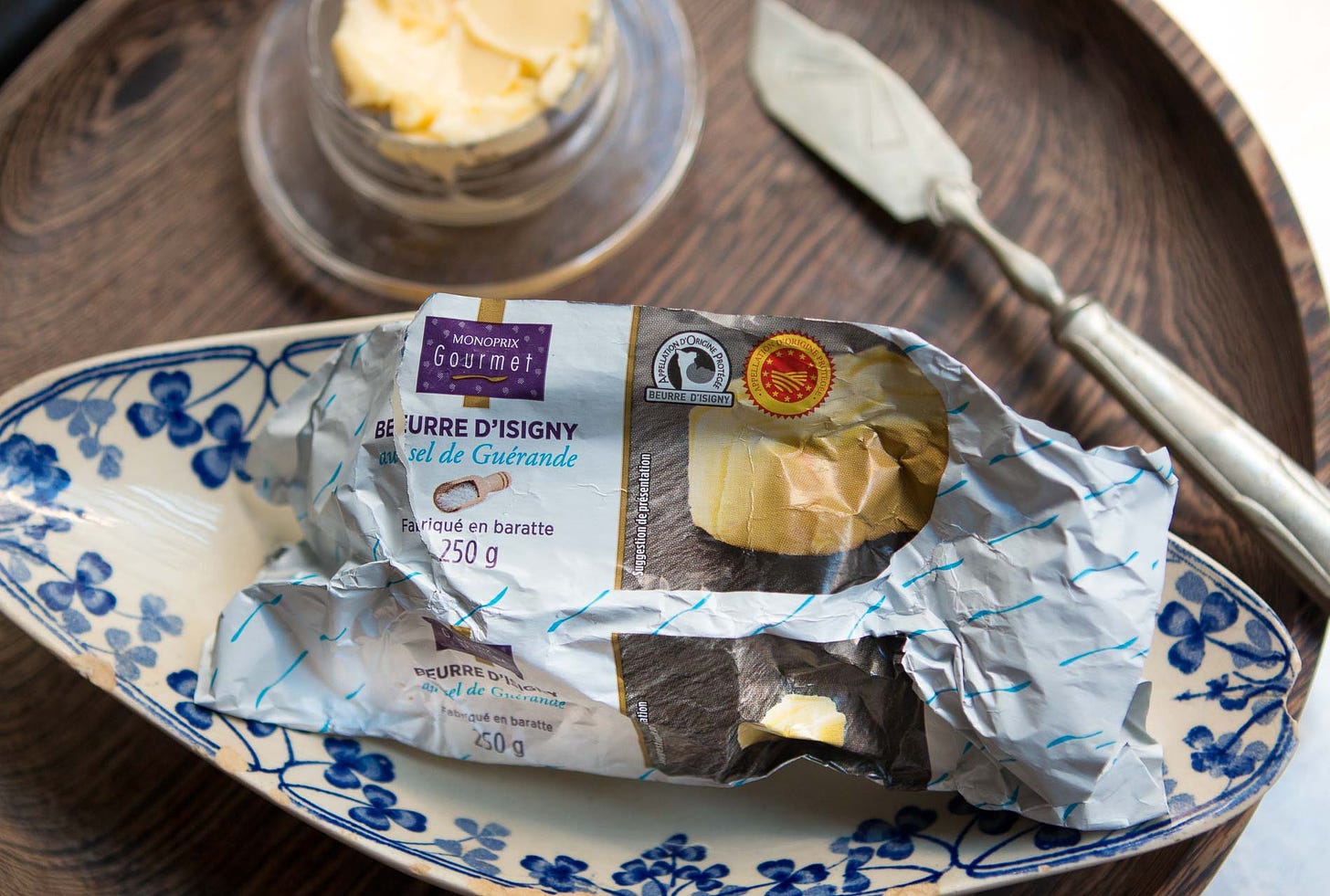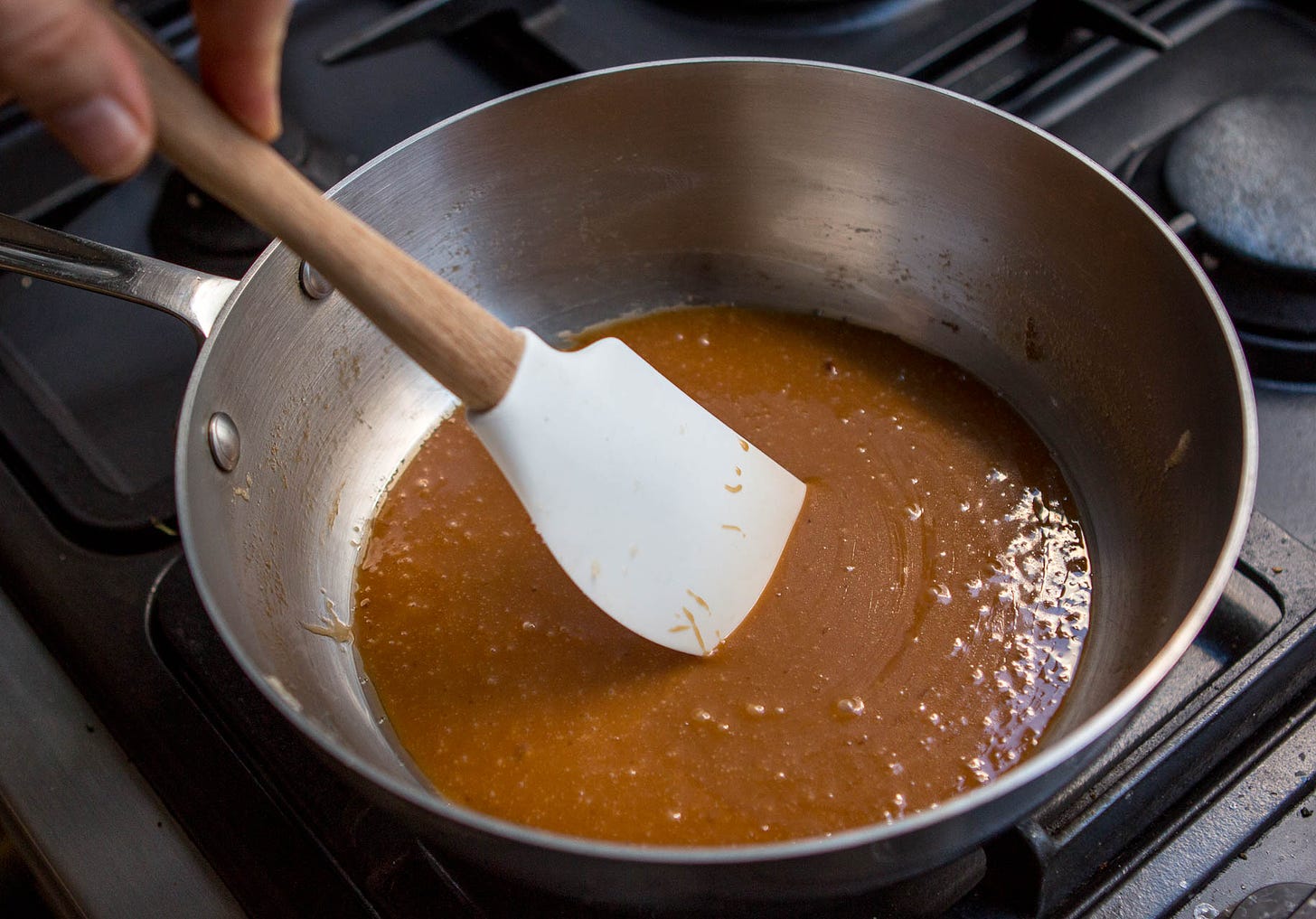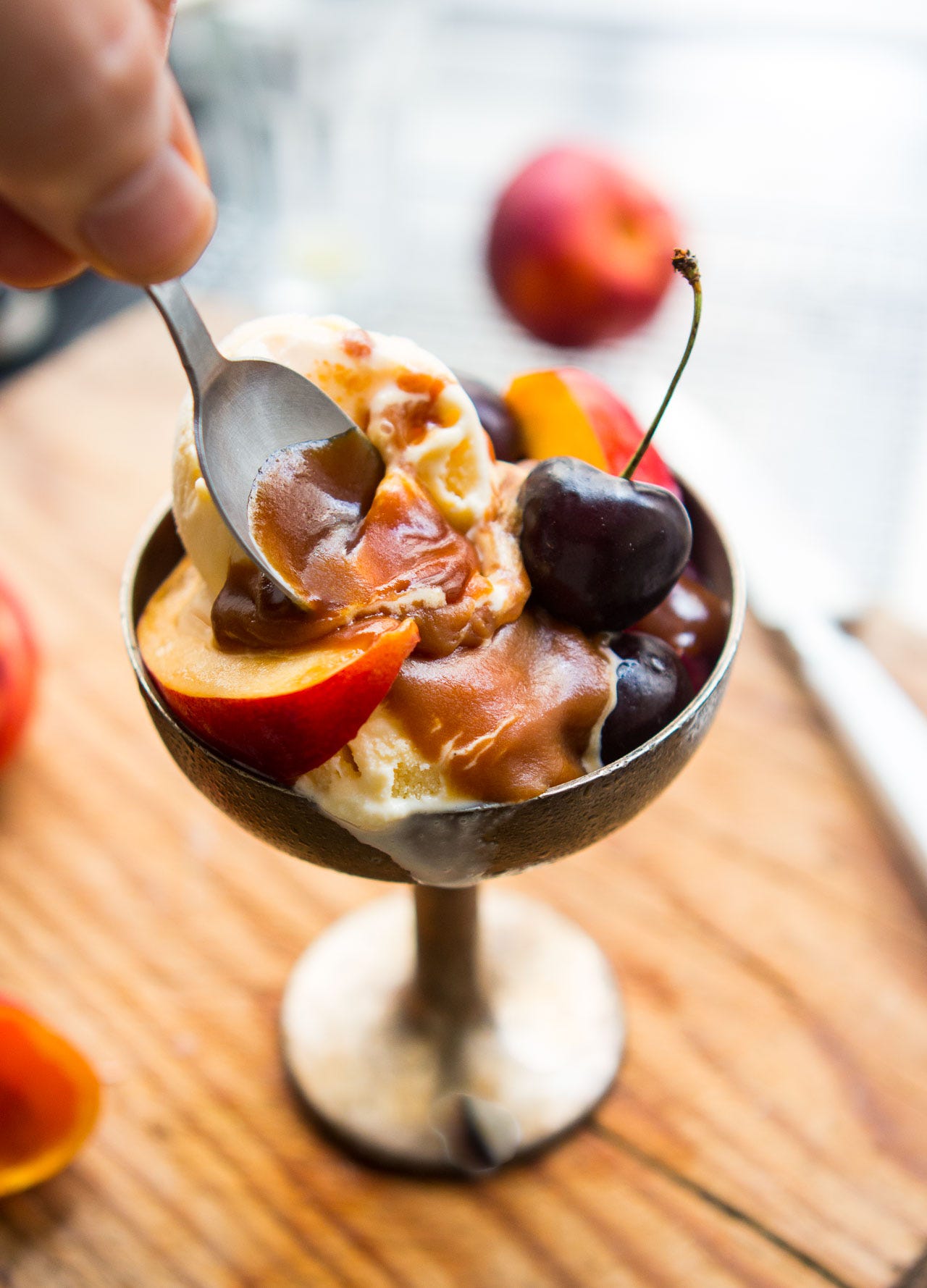This time of year, there’s a lot of talk and all sorts of articles with strategies for not turning on your oven in the summer. They remind me of all the October/November articles and recipes that promise the moistest Thanksgiving turkey ever. If anyone wants moist turkey, you can spend your life debating dry vs. wet brining, deep-frying (which is fraught with fails), roasting the bird upside down, spatchcocking it, etc., etc., or you can listen to me and just braise it.
Frankly, it never occurred to me that people didn’t want to turn on their ovens in the summer. When you work in restaurants or a bakery, you don’t have a choice. From my first summer job washing dishes at sixteen in a strip-mall steakhouse to whipping up over a hundred individual fraises des bois soufflés to order (also in the summer), I’ve spent quite a bit of time in very hot kitchens. If a waiter said to a customer, “Sorry, the pastry chef tonight doesn’t want to turn on the oven,” there would have been a riot.
During my first eleven years in Paris, I lived in a chambre de bonne, a top-floor “maids quarters,” located directly under a fiery-hot zinc roof, which was routinely ten degrees hotter than anywhere else in Paris. The upside was that it gave me bragging rights because when people complained about how hot they were, all I had to do was say that I lived in a chambre de bonne and that ended that.
And if a bakery clerk told someone in France, “Sorry, the bread bakers don’t want to turn on the oven today,” there’d be a riot.
They don’t have a choice either, although a reader in France commented on my Instagram post (above) that in their village, the bakery decided to close during the afternoons this week due to the heat, and the comments from locals about that were less than kind, shall we say.
We’re in the midst of a week-long heat wave and temperatures are hitting 40ºC (104ºF) this week. I learned to make puff pastry, by hand, in a hot kitchen and was told by the head pastry chef that if I could make it under those conditions, I could make it under any conditions.
There are a few things you can’t change: the weather, traffic, or getting people in Paris to open a window in the summer—people are wary of courants d’air, or drafts, which are thought to be very dangerous…despite little to zéro evidence of that. In fact, with Covid floating around, it’s probably a good idea? So I’m going to give you a recipe that I make all year ’round: Salted Butter Caramel Sauce.
Everyone likes ice cream in the summer and having a jar of this luscious caramel sauce on hand will make you as happy as it made us.
Aside from fostering unending debates on everything from brining turkey to whose (and/or what country’s) bagels, arepas, mangoes, tomatoes, shakshuka, hummus (and whatever else you can think of…) are the best, the internet lets me share a lot of photos, so if you have any trepidation about making caramel, I’ve posted some step-by-step shots for you. I also did a post a few years back about making the perfect caramel, with more tips.
The hardest part is cooking the sugar and butter to just the right point where it’s between well-cooked and burnt. The best way to get it right is to practice. Once you burn caramel, you won’t do it again. But if you undercook it, the sauce will lean more to the sweet side, and I like caramel to have a bit of an “edge.”
Speaking of my opinions, even though you didn’t ask, I would like to make an unsolicited, and unsponsored, plug for one of my favorite kitchen tools: the silicone spatula.
While packing for our upcoming move, I discovered I probably have at least thirty of them. The green and red Le Creuset ones, above, are my very favorites as they have large, curved heads (or blades), which are slightly indented and are great if you want to lift a liquid—such as caramel or custard—that you’re stirring to get a better look at it.
The problem? Le Creuset changed the model. So when I was at the factory in France and professed my love for them, they told me they were being discontinued, so I grabbed all they had in the outlet store, and now there are no more. (There were only around eight, so you can’t exactly blame just me if you can’t find one.) I think they were known as model BB 202 “spatula spoons.” If you do find one—or more—you might want to get one or two. But those cheapie spatulas also shown in the picture are very good too, and you can find them at cookware shops, houseware stores, and online.
So while you don’t need to turn on the oven to make this sauce, you will need to stand over the stove for a few minutes. But I think it’s worth it, and so will you.
Salted Butter Caramel Sauce
Makes 2 cups (500ml)
It’s taken a while to get people accustomed to using salted butter in baking. The late, great chef Judy Rodgers used salted butter in her puff pastry, and while you can just add salt to things, as most cooks and bakers know, salting something during cooking—or even just making a vinaigrette—is different than adding salt to the finished dish.
I like to use a wide saucepan with high sides that holds at least 4 quarts (4L) as the sauce bubbles and foams up a bit when you add the cream. I use All-Clad and Hestan Nanobond pans (not sponsored!). You just want to use a pot/brand that can stand the heat so it doesn’t buckle when cooking the hot caramel. And speaking of hot, caramel is very hot—and very sticky. You don’t want to splash any on your skin. If you’re wary, wear oven mitts and/or keep a deep bowl of ice water on hand; if any lands on your skin, plunging it into the ice water will stop the burn. If you have kids or pets running around, I’d shoo them out of the kitchen while making this so you can focus on the caramel.
Note: Be sure to read the recipe carefully all the way through before starting as once the caramel begins to brown, things go rather quickly.
6 tablespoons (75g, 3 ounces) salted butter, cubed
3/4 cup (150g) sugar
1 cup (250ml) heavy cream, warmed
1/2 teaspoon vanilla extract
1 teaspoon flaky sea salt, such as Maldon or fleur de sel (if using kosher salt, use about half that amount, then add more if desired)
1. Melt the butter and sugar in a large saucepan (or wide skillet with high sides) over medium heat. Cook, stirring frequently so the mixture melts evenly, until the butter is melted.
(Tips: At one point, because the sugar darkens, the mixture may become crystallized, which you can see in the photo in the post. Just keep cooking it, and those crystals should melt and dissolve. Depending on the butter, it may separate out and create a “slick” on top of the mixture while cooking. If so, just continue cooking and stirring, and it’ll smooth out.)
2. Continue to cook, stirring infrequently and scraping the bottom of the pan, until the color is a deep burnished brown, about the color of an old penny.
3. Now for the tricky part: Cook the caramel until it starts to smoke, and keep gently stirring it as it gets smokier. It will just take a few seconds, but as soon as it begins to smell like it’s going to start to burn, turn off the heat and immediately add about one-quarter of the warm cream, stirring as you pour. The mixture will bubble up, which is why you use a larger pot than you’d think.
4. Gradually stir in the rest of the cream, which will cause a little more bubbly activity in the pot, but it will simmer down. Stir in the vanilla and salt.
Serving: Serve the sauce warm with ice cream or another favorite dessert.
Storage: The sauce can be stored in the refrigerator for a few weeks. It’ll thicken considerably but can be gently rewarmed on the stovetop or in a microwave oven.

















I have bought and loved your "Sweet life in Paris" and "L'appart". I will buy all your other books if they are funny too, as well as practical and delicious.
Thank you.
Susan Villiere
Looks amazing! I have subscribed to your newsletter and I love it!